Large format photography means photography on film sizes from 4×5 inches on up. Other popular sizes include 5×7 and 8×10, although there are several other sizes available today up to at least 16×20. All these sizes refer to the size of the film, and therefore the negative, for each image. All the cameras look like the old timers with a flexible bellows and the photographer stands behind the camera under a dark cloth while composing the image on a large ground glass. Almost all feature interchangeable lenses and pretty much all offer Acamera movements.
While a typical 35 mm SLR (Single Lens Reflex camera) has a hard body to which a lens is rigidly attached, on a large format camera one can move the lens up and down and to either side or angle it in almost any direction, within limits, all in relation to the position of the film. One can usually also angle the back part of the camera, where the film is located, and sometimes move it up and down or to the sides. All this movement means that the large format photographer can control the final image in ways that a 35 mm photographer simply cannot.
Additionally, a photograph from a large format camera has better resolution (is sharper) than a photograph from a 35 mm camera because much more film is being used for the same scene. A 4×5 camera, like mine, creates a negative that is about 14 times the size of a 35 mm negative and an 8×10 camera’s negative is 4 times larger than that, so there is plenty of film to give great detail and fine grain characteristics, which becomes more evident as the prints get larger. A 35 mm negative must be enlarged more than 50 times to make a full 8×10 enlargement but a 4×5 needs to be enlarged only 4 times, so the grain of the film is enlarged much less in making large format prints.
Because each image needs to be composed carefully with attention to the camera movements, in addition to all the other tasks, each image takes some time to create. This makes for a more peaceful and contemplative kind of photography than smaller formats but also means a much larger time commitment from the photographer.
The drawbacks to large format photography are cost, weight, the complexity of manual shooting, and time. The film for large format is more expensive to purchase than other formats and is also more expensive to develop. While the camera and the lens may not seem terribly expensive to purchase, there are many other things that are needed including (as a partial list) a lens board, film holders, a light meter, a dark cloth, and a sturdy tripod. All this equipment means that the large format photographer has a lot of weight to carry and makes airports a real hassle. When I finally do arrive at a location I have to set the camera up, compose the shot, and then successfully capture the image. While composing the image, I can decide what film to use. Because the camera must be loaded with film for each image I can choose which film I want to use from the 3 choices I usually have with me. This allows me to shoot in either black and white, color, or saturated color for any image. The operation of a large format camera is 100% manual, so the photographer must make every decision and set every control consciously for every photograph. Because there are no fail-safe electronics there are many and varied opportunities in every step to make an error that does not result in a usable image. I think I’ve made almost every mistake and I’ve developed a true proficiency at some of them! Finally, large format requires that the photographer do all the work necessary to arrive at an acceptable negative from loading the film into the film holders, getting to the location, figuring out and getting the image, getting the film developed (or developing it themselves), and finally to spending hours printing it. That large commitment of time means that people interested only in snapshots will not become large format photographers.
So why would anyone ever bother? Because the final image has a look, a subtle character or depth, that smaller formats just don’t offer. And a print made in a darkroom from film is what was really in front of the photographer at the moment of exposure. It’s the original WISIWYS (What I Saw Is What You See) photography. Please enjoy it.
